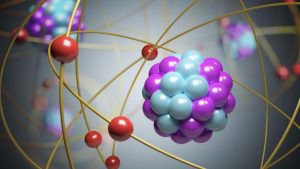Two Species Of Few-Electron Bubbles (FEBs) In Superfluid Helium Gas:

Scientists at the Indian Institute of Science (IISc), Banglore for the first time discovered two species of Few-Electron Bubbles (FEBs) in Superfluid Helium Gas.
- An electron bubble is the empty space created around a free electron in a cryogenic gas or liquid, such as neon or helium.
- They are typically very small, about 2 nm in diameter at atmospheric pressure.
- An electron injected into a superfluid form of helium creates a Single Electron Bubble (SEB) — a cavity that is free of helium atoms and contains only the electron. The shape of the bubble depends on the energy state of the electron.
- For instance, the bubble is spherical when the electron is in the ground state (i.e. state of lowest energy).
- There are also multiple electron bubbles that contain thousands of electrons.
- Superfluidity is the frictionless flow and other exotic behaviour observed in liquid helium at temperatures near absolute zero (−273.15 °C), and similar frictionless behaviour of electrons in a superconducting solid. In each case the unusual behaviour arises from quantum mechanical effects.
Few-Electron Bubbles:
- FEBs, on the other hand, are nanometre-sized cavities in liquid helium containing just a handful of free electrons.
- The number, state, and interactions between free electrons dictate the physical and chemical properties of materials.
- FEBs form an interesting system that has both electron-electron interaction and electron-surface interaction.
- FEBs were found to be stable for at least 15 milliseconds (quantum changes typically happen at much shorter time scales) which would enable researchers to trap and study them.




